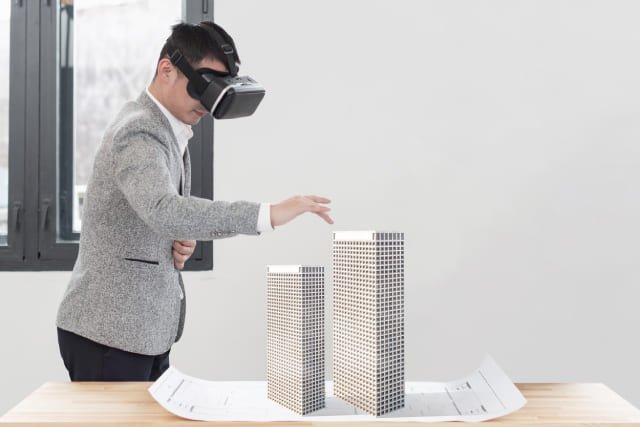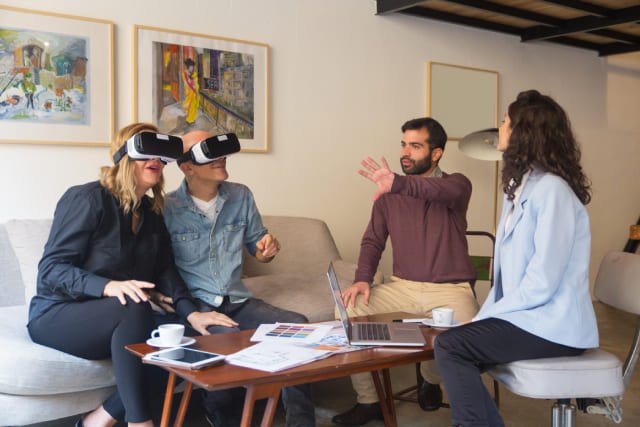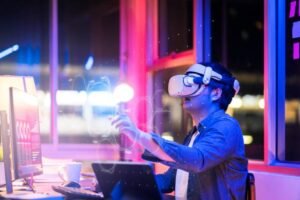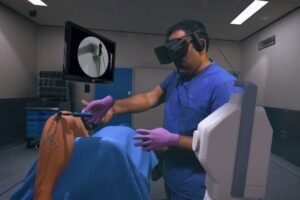
Inicio » Virtual Reality » Virtual Reality in Architecture
Virtual Reality in Architecture
Share note:
Architecture is a constantly evolving field, and virtual reality (VR) has become a revolutionary tool that is transforming the way architects design and present projects. In this article, we will explore how virtual reality can be used in architecture, the benefits it offers, the programs available and the recommended glasses for an immersive experience.
How can virtual reality be used in architecture?
Virtual reality is used in multiple stages of the architectural process. From the initial design stage through presentation and construction, VR provides a three-dimensional, immersive representation of architectural projects. Architects can create virtual models of buildings and environments, allowing users to explore and experience them as if they were physically there. In addition, VR is used for interactive virtual tours, allowing clients to visualize the proposed design and provide more accurate feedback.
Benefits of virtual reality in architecture
Immersive visualization
VR offers an immersive experience, allowing architects and clients to immerse themselves in the architectural design and experience its scale, form and atmosphere more realistically. This helps to better understand the space and make informed decisions.
Early identification of problems
By using virtual reality, architects can detect and solve potential design problems prior to physical construction. Users can evaluate ergonomics, circulation and other key aspects, reducing costs and delays later in the project.
Effective communication
VR facilitates communication between architects, clients and other stakeholders. Virtual designs can be shared and discussed in real time, improving understanding and collaboration.
Saving time and money
By reducing the need for physical mock-ups and costly modifications during the construction phase, virtual reality helps save time and money.

Programs for using virtual reality in architecture
There are several programs and tools available for using virtual reality in architecture. Some of the most popular include:
An architectural design software that allows you to create 3D models and export them to virtual reality platforms.
- SketchUp
A 3D modeling tool that integrates with virtual reality applications to visualize and explore architectural designs in an immersive way.
- Unreal Engine
A rendering and game development engine used to create interactive and realistic virtual reality experiences.
Lenses suitable for virtual reality in architecture
When it comes to virtual reality glasses, it is important to choose those that provide an immersive and comfortable experience. Some recommended lenses for use in architecture include:
- Oculus Rift: This virtual reality system offers impressive visual quality and an immersive experience. With motion controllers and precise tracking, users can explore architectural models interactively.
- HTC Vive: With high-quality resolution and precise motion tracking, HTC Vive glasses provide an immersive and accurate experience. They allow users to move freely in space and explore architectural designs more realistically.
- Windows Mixed Reality: These glasses offer a combination of virtual and augmented reality, allowing virtual elements to be superimposed on the real environment. They provide a comfortable and high quality experience to visualize and explore architectural projects.

What can be built with virtual reality:
-
Virtual tours of buildings:
Architects can build detailed 3D models of buildings and allow users to take virtual tours of them. This gives clients a realistic view of how the space will look and feel once built.
-
Environmental simulations:
By constructing virtual environments, architects can simulate different environmental conditions, such as daylighting, acoustics and airflow. This helps to assess the impact of these factors on the design and to optimize them for a more comfortable and sustainable environment.
-
Urban development models:
Virtual reality allows the construction of complete urban models, which helps urban planners and developers to visualize and analyze different development proposals. This facilitates informed decision making and communication with stakeholders.
-
Interior visualization:
Virtual reality allows the construction of detailed interior models, giving designers and clients the opportunity to explore different interior design options, such as furniture layout, color and material selection, and lighting.

In short, virtual reality in architecture offers the ability to virtually build and experience a wide variety of elements, from complete buildings to detailed interior walkthroughs and environmental simulations. This revolutionary technology is changing the way architectural projects are visualized, designed and presented, providing significant benefits for architects, clients and industry professionals.
Would you like to apply virtual reality in your projects? At Virtual Arena we are specialists in VR consulting and development for companies and institutions.
Recent articles

3D Animation: Current Trends and Innovations

Services marketing: Effective strategies for customer loyalty

3D Hologram What is it and what are its applications?
Do you have a project in mind?
Related articles




